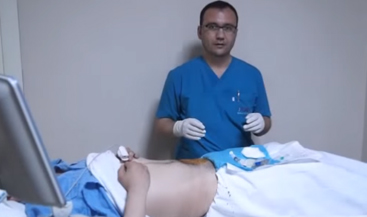Chronic pelvic pain is defined as pain that has been under the umbilicus for at least six months. It can be seen in men and women. It may or may not be associated with menstruation in women. A significant portion of the patients are in the form of neuropathic pain as a result of dysfunction of the nervous system.
Gynecological, gastrointestinal, urological, musculoskeletal and various disorders throughout the body can cause chronic pelvic pain. In women, 20% of pelvic pain is due to gynecological reasons.
Gynecological reasons
1. Endometriosis; Endometriosis, a disease of the tympanic membrane of the uterus, can cause problems such as pain, bleeding and infertility in some women, while some women give no symptoms.
2. Pelvic inflammatory disease; It is an infectious disease of female organs due to sexually transmitted diseases. Apart from this, appendicitis may also develop due to tuberculosis and intestinal infections.
3. Pelvik adhesive disease; They are adhesions that develop due to some causes in female organs.
Causes of pelvic pain in men
1. Inguinal region surgeries
2. Testicular and related problems, after varicocele operations
3. Chronic prostate problems
Other causes (seen in both sexes)
1. Restless bowel syndrome; Chronic abdominal pain due to intestinal irregularities is a symptomatic disorder, such as stool deficiency.
2. Painful bladder syndrome and cystitis; Pelvic pain is not caused by infection. It is a disease with frequent urination and urgent urinary symptoms.
3. Pelvik base pain; Pain during urination, frequent urination, pain during sexual intercourse, such as constipation is irrelevant. The result of the weakness of the pelvic floor muscles develops.
4. Fibromyalgia and myofascial trigger point; Abdominal muscles, pelvic floor muscles and their associated ligaments and tendons can develop due to disturbances.
Diagnosis
It may not always be possible to identify the causes of chronic pelvic pain. Detailed examinations, inflammation, and infections may require imaging methods such as blood tests, ultrasound, and laparoscopy.
Treatment
- Drug treatments; pain medications are often used as well as drugs used for the treatment of chronic pelvic pain. Hormone medications, painkillers, neuropathic pain medications, depression medications, epilepsy medications are used.
- Physiotheraphy; Exercise and physical therapy applications for pelvic floor muscles may be helpful in some patients.
- Acupuncture, Psychotherapy, Relaxation techniques and biofeedback
- Block (TAP block)
- Sensitive zone blocking therapy
TAP block in ultrasound guided
Pain is one of the most effective chronic pelvic pain treatment methods performed in treatment centers. Ultrasonography improves the success rate of use and reduces the possibility of side effects. TAP block is a nerve blockage method. Temporary blockage therapy for iliohyogogastric and ilioinguinal nerves with nerves of the lower abdomen and genital region is performed.
All treatments except surgical treatment can be applied in our clinic.


